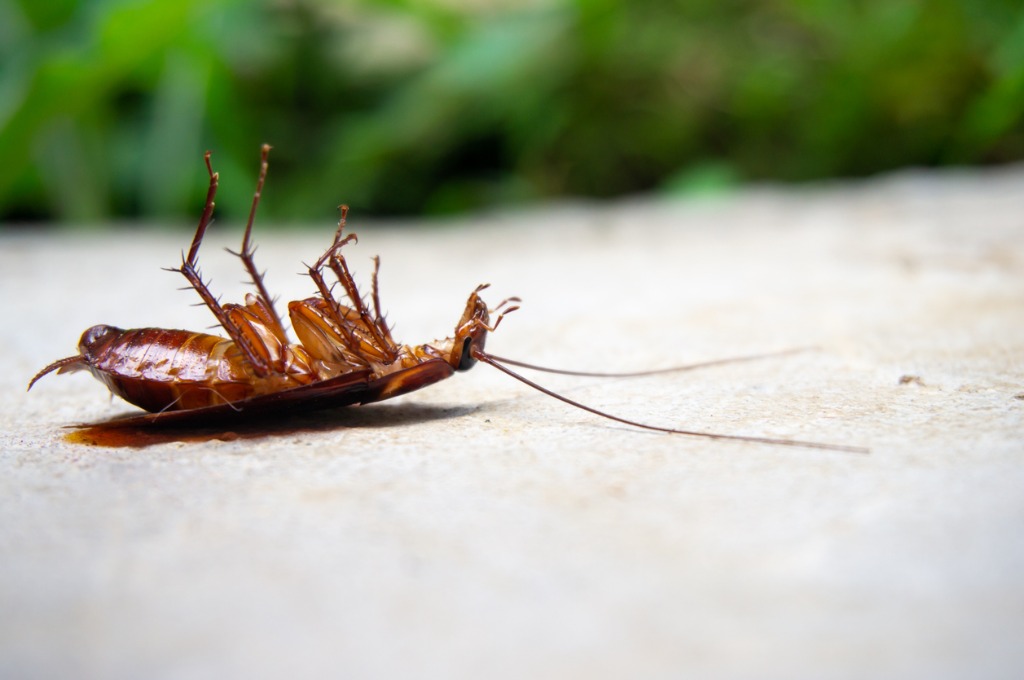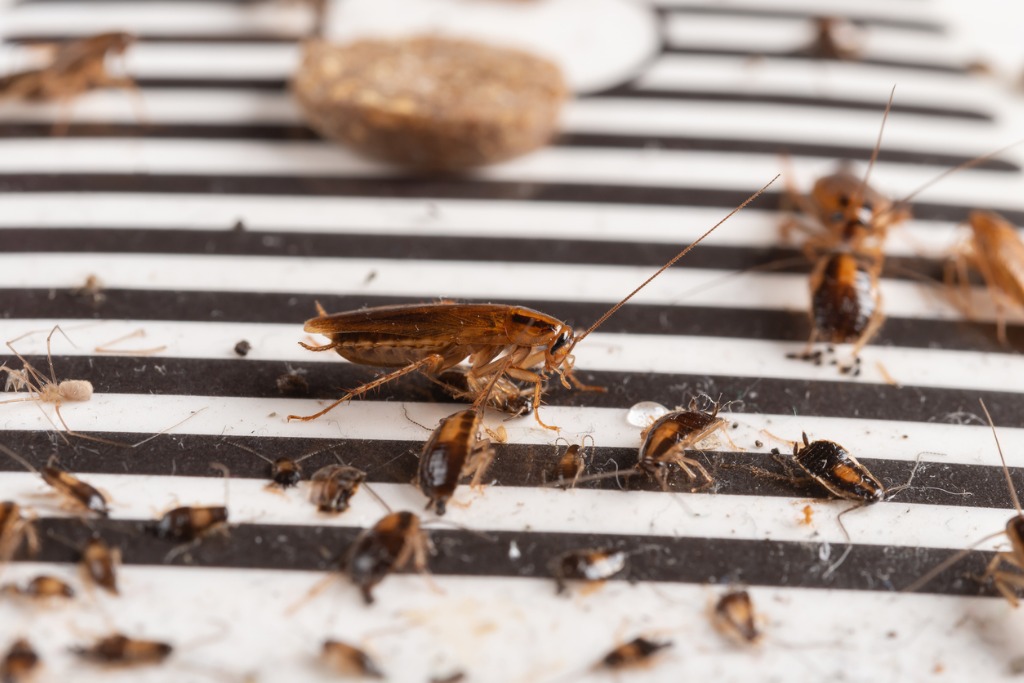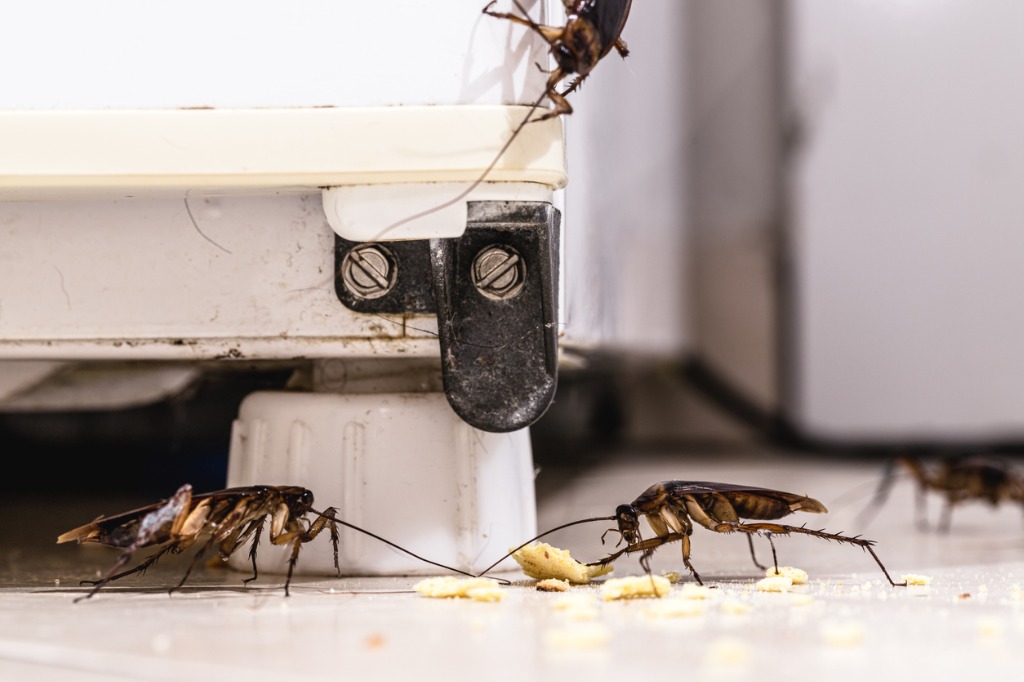Did you know that cockroaches have been around for over 350 million years? That’s right, these resilient creatures have survived countless environmental changes and outlived the dinosaurs. In this article, we will take a fascinating journey through the life cycle of a cockroach, exploring how these notorious pests transform from tiny eggs to fully grown adults. Get ready to delve into the hidden world of these incredible insects and discover the secrets behind their remarkable ability to adapt and thrive.
Key takeaways
- Cockroach life cycle includes egg, nymph, and adult stages.
- Eggs are protected in oothecae and hatch into nymphs.
- Nymphs undergo molting and growth to become adults.
- Molting is essential for development and size increase.
- Adult cockroaches have wings, reproductive organs, and specific behaviors.
- Cockroaches play ecological roles, but can also pose health risks and require control measures in human environments.
What is the life cycle of a cockroach?
The life cycle of a cockroach consists of three main stages: egg, nymph, and adulthood. Female cockroaches produce egg cases called oothecae, which contain multiple eggs. These eggs eventually hatch into nymphs, which resemble miniature adult cockroaches. Nymphs undergo several molts as they grow, gradually developing into fully winged and sexually mature adult cockroaches, completing the life cycle. The duration of this cycle varies by species and environmental conditions.
How do cockroaches reproduce?

Cockroaches reproduce sexually. Female cockroaches produce egg cases, called oothecae, which contain multiple eggs. They carry these egg cases until the eggs are ready to hatch. Once the eggs hatch, nymphs emerge, and they go through several stages of growth before reaching adulthood. The male cockroach fertilizes the eggs by transferring sperm to the female through a specialized structure called the spermatophore during a mating ritual. This process ensures the continuation of the cockroach species.
Egg Stage
Description of cockroach eggs
Cockroach eggs are typically small and oval-shaped, characterized by their dark coloration. Encased within a protective structure known as an ootheca, these eggs vary in size and appearance depending on the cockroach species.
Where cockroaches lay their eggs
Cockroaches prefer to lay their eggs in concealed and shadowy locations, providing a safeguard for their vulnerable offspring. Common nesting sites include cracks, crevices, and other hidden spots within homes, buildings, or natural environments.
Incubation period
The duration of the incubation period for cockroach eggs is influenced by environmental factors, especially temperature and humidity. Warmer, more humid conditions typically result in shorter incubation periods. Throughout this period, the eggs remain inert and motionless, awaiting optimal conditions for hatching.
Egg stage characteristics
One significant characteristic of the egg stage is the susceptibility of the eggs to predators and environmental hazards. The protective ootheca serves as a critical shield against external threats. Furthermore, some cockroach species produce sizable egg clusters, strategically placed in hidden locations to enhance survival chances. This emphasis on concealed egg-laying showcases the importance of this seemingly uneventful stage in the cockroach life cycle, ensuring the continuity of these tenacious insects.
Nymph Stage
Hatching of nymphs
- The nymph stage begins with the hatching of nymphs from eggs.
- This marks the transition from the egg stage to the nymph stage.
Appearance and characteristics of nymphs
- Nymphs resemble miniature versions of the adult insect but lack fully developed wings and reproductive organs.
- They may have the same body shape and general characteristics as adults but may have different coloration.
- Nymphs gradually develop more adult-like features as they progress through successive nymphal instars.
Growth and development during the nymph stage
- Nymphs grow and develop by molting, shedding their exoskeleton to accommodate their increasing size.
- They go through a series of instars, each separated by molting, during which they become larger and more mature.
- Growth and development are significant aspects of the nymph stage, leading to the eventual transition to the adult stage.
Importance of molting
- Molting is crucial for nymphs as it allows them to grow and develop.
- During molting, the nymph sheds its old exoskeleton and emerges with a new, larger exoskeleton underneath.
- This process is necessary to accommodate the increasing size of the nymph’s body and the development of adult features.
- Molting is repeated several times during the nymph stage until the nymph reaches its final instar, at which point it will molt into its adult form.
Molting Process
Explanation of molting
Molting is a fundamental process in the growth and development of arthropods, including cockroaches. It involves the shedding of the old exoskeleton, which is the rigid outer covering of the insect’s body. The exoskeleton is composed of a tough, chitinous material that provides support and protection. When a cockroach molts, it essentially emerges from its old exoskeleton, which has become too small to accommodate its growing body. This allows the cockroach to continue growing and developing.
Frequency of molting in cockroaches
The frequency of molting in cockroaches can vary depending on several factors, including the species, environmental conditions, and the cockroach’s age. In general, young cockroaches undergo more frequent molts compared to adults. Some species may molt as many as 10 to 13 times before reaching adulthood. As they mature, the frequency of molting decreases. Adult cockroaches may still molt periodically, but it is less frequent compared to the nymphal stages.
Role of molting in growth and development
Molting plays a vital role in the growth and development of cockroaches. During each molt, the cockroach not only sheds its old exoskeleton but also undergoes various internal changes. These changes include the development of new tissues, organs, and appendages. Molting allows the cockroach to increase in size, repair damaged body parts, and adapt to its changing environment. It is a crucial mechanism for accommodating the growth of the cockroach and enabling it to reach maturity.
Instar Stages
Different instar stages in the cockroach life cycle

Cockroaches, like many insects, go through several instar stages during their life cycle. The number of instars can vary depending on the cockroach species. Typically, there are five to seven instars in the development of a cockroach nymph. These instar stages are intermediate between the hatching of the nymph from the egg and the final molt into the adult stage. Each instar is characterized by specific physical features and gradual changes as the nymph grows and develops.
Physical changes and growth in each instar stage
In each instar stage, the cockroach nymph undergoes significant physical changes and growth. Initially, nymphs are small and lack wings. As they progress through successive instars, they grow larger, and their bodies become more developed. They gain additional body segments, antennae, and appendages. The size and shape of their wing pads also change, although they do not develop functional wings until the final instar. Molting is a critical part of this process, allowing nymphs to shed their old exoskeletons and emerge with larger, more mature bodies.
Behavior and feeding habits of nymphs
Nymphs of cockroaches are generally active and exploratory. They exhibit nocturnal behavior, primarily coming out at night to search for food and water. Cockroach nymphs are omnivorous and feed on a variety of organic materials, including decaying plant matter, food scraps, and even dead insects. Their feeding habits contribute to their growth and development. Nymphs are also more vulnerable to predators and environmental stressors compared to adults, so they often seek shelter in cracks and crevices during the day.
In summary, the instar stages in the cockroach life cycle involve a series of physical changes and growth, with each stage marked by specific characteristics. Nymphs are active and primarily nocturnal, exhibiting feeding habits that support their development into adulthood.
Behavior and feeding habits of nymphs
Nymphs of cockroaches are generally active and exploratory. They exhibit nocturnal behavior, primarily coming out at night to search for food and water. Cockroach nymphs are omnivorous and feed on a variety of organic materials, including decaying plant matter, food scraps, and even dead insects. Their feeding habits contribute to their growth and development. Nymphs are also more vulnerable to predators and environmental stressors compared to adults, so they often seek shelter in cracks and crevices during the day.
Adult Stage
Development from nymph to adult
The development of cockroaches from nymph to adult involves a series of molts. As nymphs, cockroaches go through several instar stages, each marked by molting. During each molt, the nymph sheds its old exoskeleton and emerges with a new, larger one. This process allows the cockroach to grow and develop. The final molt, known as the imaginal molt, results in the nymph transitioning into the adult stage. In the adult stage, the cockroach has fully developed wings (if it is a winged species) and reproductive organs.
Characteristics of adult cockroaches
Adult cockroaches exhibit several characteristics that distinguish them from nymphs. These characteristics include:
- Fully developed wings in winged species, allowing for flight.
- Well-defined reproductive organs, enabling mating and reproduction.
- A more robust and mature appearance compared to nymphs.
- A hardened exoskeleton that provides protection and support.
- The ability to exhibit reproductive behaviors, such as courtship and mating.
Reproductive capabilities of adult cockroaches
Adult cockroaches are responsible for reproduction within the species. They have well-developed reproductive organs and engage in specific mating behaviors. Typically, male cockroaches use pheromones and other courtship behaviors to attract females. Once a female is receptive, mating occurs, and she can subsequently lay egg cases (oothecae) that contain multiple eggs. These egg cases are often deposited in protected locations, ensuring the survival of the offspring. Cockroach adults play a crucial role in the continuation of the species.
Lifespan of adult cockroaches
The lifespan of adult cockroaches varies among species and is influenced by factors such as environmental conditions and the presence of predators. In general, adult cockroaches can live for several months to a few years. Some species have shorter lifespans, while others can live longer. The availability of food, water, and shelter also impacts the longevity of adult cockroaches. Lifespan can differ between males and females, with females typically living longer as they need to reproduce and care for their offspring.
Reproduction
Mating behavior and process
Cockroaches exhibit specific mating behaviors and processes that vary somewhat among species but generally involve the following:
- Male Attraction: Male cockroaches often release pheromones to attract females. They may engage in courtship rituals, such as antennal stroking or wing fluttering, to entice receptive females.
- Female Acceptance: A receptive female will allow a male to approach and mate. Female cockroaches have a specialized reproductive organ called a spermatheca, where they store sperm from previous matings.
- Copulation: Mating typically involves the male mounting the female and transferring sperm packets (spermatophores) into the female’s reproductive tract.
- Post-Mating Behavior: After mating, the female may search for a suitable location to deposit her egg case (ootheca), which contains fertilized eggs. Mating is essential for the fertilization of these eggs.
Egg production by adult females
Adult female cockroaches are responsible for producing and depositing egg cases, known as oothecae. The number of eggs within an ootheca can vary by species but often ranges from a few dozen to several hundred eggs. The female carries the ootheca with her until it is ready to be deposited. Once laid, the ootheca serves as a protective capsule for the eggs, shielding them from environmental hazards and predators. The female may produce multiple oothecae during her lifetime, depending on species and environmental conditions.
Nesting and protection of eggs
Cockroach females take great care in selecting suitable locations to deposit their oothecae. These locations are often hidden in cracks, crevices, or other concealed areas. By doing so, the female provides protection to the developing eggs. The ootheca has a tough, protective outer layer that shields the eggs from desiccation (drying out) and predators. In some species, the female may also remain nearby to guard the ootheca and ensure the safety of her offspring when they hatch. This nesting and protection strategy increases the chances of survival for cockroach eggs and nymphs.
Role of Cockroaches in Ecosystem

Ecological significance of cockroaches
Cockroaches play several important ecological roles in various ecosystems:
- Decomposers: Cockroaches are efficient scavengers and decomposers. They consume decaying organic matter, such as dead plants, fallen leaves, and other detritus. By breaking down these materials, they help recycle nutrients back into the ecosystem.
- Food Source: Cockroaches serve as a food source for numerous predators, including birds, amphibians, reptiles, and some mammals. They contribute to the diets of these animals and help support food webs.
- Seed Dispersal: Some cockroach species are involved in seed dispersal. They consume fruits and seeds and later excrete them in different locations, aiding in the dispersal and germination of certain plant species.
- Aeration of Soil: As cockroaches burrow in the soil, they create tunnels that can improve soil aeration and water infiltration. This can benefit plant growth and soil health.
Contribution to decomposition and nutrient cycling
Cockroaches are vital to decomposition and nutrient cycling in ecosystems. They contribute to these processes in several ways:
- Detritus Consumption: Cockroaches feed on decaying organic matter, breaking it down into smaller particles through digestion. This fragmentation of organic material increases its surface area, making it more accessible to decomposers like bacteria and fungi.
- Nutrient Release: During digestion, cockroaches release nutrients like nitrogen, phosphorus, and carbon back into the environment in the form of feces. These nutrients become available for plants and other organisms, supporting the growth of vegetation.
- Accelerated Decomposition: Cockroaches help accelerate the decomposition process by physically breaking down organic matter and by facilitating microbial activity within their digestive systems. This decomposition releases nutrients that enrich the soil and support plant growth.
- Balancing Ecosystems: Cockroaches help maintain the balance of ecosystems by preventing the accumulation of excessive organic debris, which, if left unchecked, could become a breeding ground for pests and disease vectors.
Interaction with Humans
Concerns and problems associated with cockroaches
Cockroaches present various concerns and challenges for humans. These include health risks, as they can carry disease-causing pathogens and allergens that may trigger respiratory issues and potentially transmit diseases. Additionally, their presence can lead to food contamination, as cockroaches often invade kitchens and pantries, leaving behind droppings and saliva on surfaces and food items. The unpleasant odor they emit in large numbers can affect indoor environments, and certain cockroach species may cause structural damage by gnawing on organic materials like paper and fabric.
Methods of control and prevention
To address cockroach infestations and mitigate associated problems, several methods of control and prevention can be employed. Sanitation is a key component, involving the regular cleaning of living spaces, sealing food containers, and eliminating sources of water leaks that attract cockroaches. Sealing entry points, such as cracks and gaps in walls and doors, can prevent their entry. Removing attractants like pet food dishes left out overnight and securing garbage bins with tight-fitting lids also helps. In cases of severe infestations, professional pest control services may be required, utilizing baits, insecticides, and traps designed to target cockroaches. Regular inspections are essential to detect infestations early, allowing for prompt action and reducing the need for extensive pest control measures.
Conclusion
The life cycle of a cockroach is a fascinating and resilient process. From the moment they hatch from their egg cases to their final stage as adults, cockroaches undergo several molts and transformations. They are able to adapt to various environments and can survive in harsh conditions. Understanding the life cycle of these pests is crucial for effective pest control measures. By studying their life cycle, we can develop strategies to disrupt their reproduction and growth, ultimately reducing their population. So, let’s continue to explore and learn more about these creatures in order to better manage and control them in our homes and communities.
FAQs about Dealing with Mouse and Rat Infestations:
How can I prevent a cockroach infestation in my home?
To prevent a cockroach infestation, maintain good hygiene, keep your home clean and dry, seal cracks and crevices, store food in airtight containers, and consider using traps or professional pest control services if necessary.
How long do adult cockroaches live?
Adult cockroaches generally live for several months to a few years. The exact lifespan can vary based on factors such as the species of cockroach, environmental conditions, and the availability of food and shelter. Some may live longer in optimal conditions, while others may have shorter lifespans in less favorable environments.
Are cockroaches dangerous to humans?
Cockroaches can carry and transmit disease-causing pathogens, so they pose potential health risks. Additionally, their presence can trigger allergies in some individuals. It’s important to take measures to control and prevent cockroach infestations.
Can cockroaches survive without a head?
Cockroaches can survive for a short period without their heads because many of their essential functions, such as breathing and movement, are controlled by ganglia located throughout their bodies. However, they will eventually die due to dehydration or other factors.
What should I do if I have a cockroach problem in my home?
If you have a cockroach problem, it’s advisable to consult with a professional pest control service. They can assess the extent of the infestation and implement appropriate measures to eradicate the cockroaches from your home.

